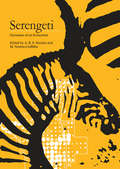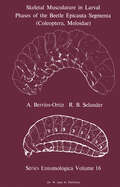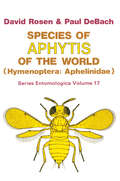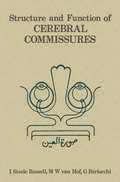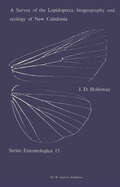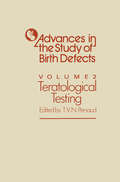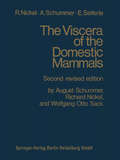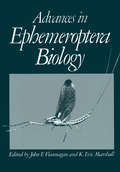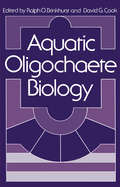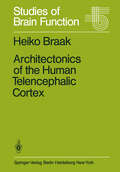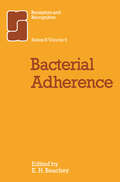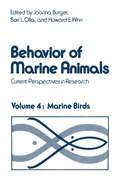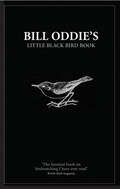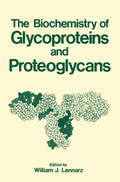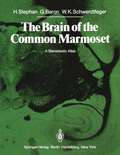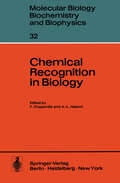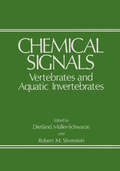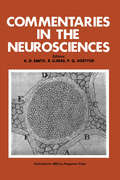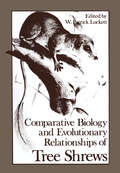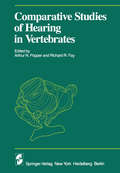- Table View
- List View
Research and Practice in Social Skills Training
by A.S. Bellack M. HersenIt is perhaps trite to refer to human beings as social animals, but never theless it is true. A substantial portion of our lives is spent in interactions with other people. Moreover, the nature, quality, and quantity of those interactions have a tremendous impact on behavior, mood, and the adequacy of adjustment. Faulty interpersonal relationship patterns have reliably been associated with a wide variety of behavioral-psychological dysfunctions ranging from simple loneliness to schizophrenia. Most "traditional" analyses of interpersonal failures have viewed them as consequences or by-products of other difficulties, such as anx iety, depression, intrapsychic conflict, or thought disorder. Con sequently, remediational efforts have rarely been directed to interper sonal behavior per se. Rather, it has been expected that interpersonal relationships would improve when the source disorder was eliminated. While this model does account for some interpersonal dysfunctions (e.g., social anxiety can inhibit interpersonal behavior), it is not adequate to account for the vast majority of interpersonal difficulties. In fact, in many cases those difficulties either are independent of or underlie other dysfunctions (e.g., repeated social failure may produce depression or social anxiety).
Serengeti: Dynamics of an Ecosystem
by M. Norton-Griffiths A. R. E. SinclairOriginally published in 1979, Serengeti: Dynamics of an Ecosystem was immediately recognized as the first synthesis of the patterns and processes of a major ecosystem. A prototype for initial studies, Serengeti contains baseline data for further and comparative studies of ecosystems. The new Serengeti II builds on the information presented originally in Serengeti; both books together offer essential information and insights for ecology and conservation biology.
Skeletal Musculature in Larval Phases of the Beetle Epicauta Segmenta (Series Entomologica #16)
by A. Berrios-Ortiz R.B. SelanderThis study, the first in an intended series of anatomical investigations of the blister beetles, was undertaken primarily for the purpose of determining the changes that occur in the skeletal musculature during postembryonic larval development. The species studied, Epicauta segmenta (Say), like others belong ing to the coleopterous family Meloidae, is characterized by hypermetamor phosis (SELANDER and WEDDLE, 1969). The egg develops into an active, well sclerotized larva that searches for grasshopper eggs, which, as in the case of all species of Epicauta, serve as the sole larval food. This triungulin phase of the larval stage, as it is called, is followed by the first grub phase (Fig. 1), during which the larva continues to feed and undergoes several molts. After feeding is completed the larva commonly enters a sessile, diapausing coarctate phase in which the integument is heavily sclerotized and the appendages, including the legs, are vestigial (Fig. 2). Following this the larva attains an active second grub phase (Fig. 3) closely resembling the first grub phase in external anatomy. Normally, the second grub phase leads directly to pupation and the formation of the adult. An alternate, abbreviated developmental pattern, involving pupation immediately after the first grub phase, is also recorded in this and many other species of Epicauta.
Species of Aphytis of the World: Hymenoptera: Aphelinidae (Series Entomologica #17)
by David Rosen P. DeBachA Survey of the Lepidoptera, Biogeograhy and Ecology of New Caledonia (Series Entomologica #15)
by J.D. HollowayI spent four months in New Caledonia in 1971 with the object of making a quantitative survey of the night-flying macrolepidoptera with light-traps and an assessment of the Rhopalocera and microlepidoptera. This fieldwork was financed by a Government Grant-in-Aid for Scientific Investigations adminis tered by the Royal Society, and by a grant from the Godman Fund. I devoted a further three weeks to sampling on Norfolk I. , and, with the help of local naturalists, Mr. and Mrs. F. JOWETT, was able to produce a detailed account of the biogeography and ecology of the moth fauna (HOLLOWAY, 1977). This book is an account of the results of the New Caledonian work, together with reviews of the geology, phytogeography and general zoogeography pre sented as background for the Lepidoptera fauna and its geography. Previous work on the macroheterocera, primarily papers by VIETTE (1948- 1971), had recorded not many more than a hundred species, a very low total considering the area of the island relative to that of the Fiji group where the moths were being studied by Dr. G. S. ROBINSON when the New Caledonian expedition was at the planning stage. The Fijian fauna then promised consider ably to exceed three hundred species. Evidently many more species awaited discovery in New Caledonia.
Teratogenic Mechanisms (Advances in the Study of Birth Defects #1)
by T. V. N. PersaudThe study of birth defects has assumed an importance even greater now than in the past because mortality rates attributed to congenital anomalies have declined far less than those for other causes of death, such as infectious and nutritional diseases. It is estimated that as many as 50% of all pregnancies terminate as miscarriages. In the majority of cases this is the result of faulty development. Major congenital malformations are found in at least 2% of all liveborn infants, and 22% of all stillbirths and infant deaths are associated with severe congenital anomalies. Teratological studies of an experimental nature are neither ethical nor justifiable in humans. Numerous investigations have been carried out in laboratory animals and other experimental models in order to improve our understanding of abnormal intra-uterine development. In less than two decades the field of experimental teratology has advanced phenomenally. As a result of the wide range of information that is now accumulating, it has become possible to obtain an insight into the causes, mechanisms and prevention of birth defects. However, considerable work will be needed before these problems can be resolved. This book brings together some of the more recent and important research findings related to the mechanisms and pathogenesis of abnormal develop ment. It is not only a documentation of the latest experimental work, but it also points out future directions that seem productive and challenging.
Teratological Testing (Advances in the Study of Birth Defects #2)
by T. V. N. PersaudThe study of birth defects has assumed an importance even greater now than in the past because mortality rates attributed to congenital anomalies have declined far less than those for other causes of death, such as infectious and nutritional diseases. It is estimated that as many as 50% of all pregnancies terminate as miscarriages. In the majority of cases this is the result of faulty development. Major congenital malformations are found in at least 2% of all liveborn infants, and 22% of all stillbirths and infant deaths are associated with severe congenital anomalies. Teratological studies of an experimental nature are neither ethical nor justifiable in humans. Numerous investigations have been carried out in laboratory animals and other experimental models in order to improve our understanding of abnormal intra-uterine development. In less than two decades the field of experimental teratology has advanced phenomenally. As a result of the wide range of information that is now accumulating, it has become possible to obtain an insight into the causes, mec.;hanisms and prevention of birth defects. However, considerable work will be needed before these problems can be resolved. The· contributions in this volume deal primarily with the areas of terato logical evaluation and the use of selected animal models for the study of con genital anomalies. It is not only a documentation of the latest experimental work, but it also indicates new and important areas for future research.
The Viscera of the Domestic Mammals
by NICKELVIII equally to this first English edition. The work deals with the body cavities, digestive system and teeth, spleen, and with the respiratory and urogenital systems of the dog, cat, pig, ox, sheep, goat, and horse. Each organ system is described in a general and comparative chapter, which is followed by shorter special chapters for the carnivores, pig, ruminants, and horse. In agreement with the original authors, substantive changes were made in several instances to take into account the results of recent research and to eliminate conflicts between views commonly held by German anatomists and those outside of Europe, but foremost to profit by the advances in Nomina anatomica veterinaria* (NAV), a uniform international nomenclature, which came into existence while this translation was in progress. This nomenclature lists a single, usually descriptive term for homologous structures in all domestic mammals, and wherever possible for the same structure in man; and thus has the potential of simplifying student instruction and promoting interdisciplinary understanding. The work of the International Committee on Veterinary Anatomical Nomenclature in many instances included re-evaluations of existing anatomical concepts; and it was these that necessitated most of the changes in the present work. The nomenclature conforms, with very few exceptions, to the second edition of the NA V.
Achievement Motivation: Recent Trends in Theory and Research
by FyansThis book started as a symposium on Achievement Motiva tion at the 1978 American Educational Research Association Convention. The participants in that symposium were Jack Atkinson, Martin Maehr, Dick De Charms, Joel Raynor, and Dave Hunt. The subsequent response to that symposium indicated a "coming of age" for motivation theory in terms of education. Soon afterward, at a Motivation in Education Conference at University of Michigan, Ann Arbor, it became apparent that due to this emergence of motivation what was needed was a comprehensive perspective as to the state of the art of achievement theory. Achievement theory had by now well surpassed its beginnings in the 1950s and 1960s and was ready for a composite presentation and profile of the recent research and theories of motivation. Thus, this volume was born. I would like to take this opportunity to thank each contribu tor to this book as well as Robert L. Linn who critically reviewed several of the manuscripts. Thanks are also due to my former graduate advisors, Martin L. Maehr, Maurice Tatsuoka, and Harry Triandis, for the viewpoints given me in graduate school education which I hope have benefitted this under taking. Joyce Fitch did a splendid joh typing many of these chapters and special gratitude should be given to Judy Cadle of Professional Services, Inc. for the composition and proofing of this book.
Animal Sonar Systems (Nato ASI Subseries A: #28)
by R. BusnelThirteen years have gone by since the first international meet ing on Animal Sonar Systems was held in Frascati, Italy, in 1966. Since that time, almost 900 papers have been published on its theme. The first symposium was vital as it was the starting point for new research lines whose goal was to design and develop technological systems with properties approaching optimal biological systems. There have been highly significant developments since then in all domains related to biological sonar systems and in their appli cations to the engineering field. The time had therefore come for a multidisciplinary integration of the information gathered, not only on the evolution of systems used in animal echolocation, but on systems theory, behavior and neurobiology, signal-to-noise ratio, masking, signal processing, and measures observed in certain species against animal sonar systems. Modern electronics technology and systems theory which have been developed only since 1974 now allow designing sophisticated sonar and radar systems applying principles derived from biological systems. At the time of the Frascati meeting, integrated circuits and technol ogies exploiting computer science were not well enough developed to yield advantages now possible through use of real-time analysis, leading to, among other things, a definition of target temporal char acteristics, as biological sonar systems are able to do. All of these new technical developments necessitate close co operation between engineers and biologists within the framework of new experiments which have been designed, particularly in the past five years.
Aquatic Oligochaete Biology
by Ralph O. BrinkhurstAfter some conversations with Professor Dr. H. Caspers and other participants at the triennial congress of the International Association of Theoretical and Applied Limnology (S. I. L. ) held in Copenhagen, Denmark (1977), the senior editor approached the international delegates at the business meeting for approval of the concept of holding the First International Symposium on Aquatic Oligochaete Biology at Sidney (near Victoria) British Columbia on May 1-4, 1979. The S. I. L. agreed to sponsor such a meeting, and this sponsorship in turn led to the provision of space and technical facilities at the Institute of Ocean Sciences Patricia Bay, the Pacific Regional headquarters of the Ocean and Aquatic Sciences component of the federal Fisheri~s and Oceans Department. The National Research Council of Canada provided travel support for a number of non-Canadian participants. Invitations were sent to as many active workers in the field as the senior editor could name, and in addition two representatives of closely allied fields were invited - Dr. V. Standen who works with closely related but terrestrial species, and Dr. J. Grassle who works with polychaetes but especially with Capitella capitata which is much like an oligochaete in some aspects of its biolog- so much so that the senior editor in his salad days succumbed to some ill-founded advice and described Capitella as a new marine tubificid! The addition of these "outside" influences prevented the group from making a number of unfounded assumptions during discussions, and provided valuable cross-linkages.
Architectonics of the Human Telencephalic Cortex (Studies of Brain Function #4)
by H. BraakThis is a timely opus. Most of us now are too young to remember the unpleasant ring of a polemic between those who produced "hair-splitting" parcellations of the cortex (to paraphrase one of O. Vogt's favourite expressions) and those who saw the cortex as a homogeneous matrix sus taining the reverberations of EEG waves (to paraphrase Bailey and von Bonin). One camp accused the other of producing bogus preparations with a paint brush, and the other way around the accusation was that of poor eye-sight. Artefacts of various sorts were invoked to explain the opponent's error, ranging from perceptual effects (Mach bands crispening the areal borders) to poor fixation supposedly due to perfusion too soon (!) after death. I have heard most of this directly from the protagonists' mouths. The polemic was not resolved but it has mellowed with age and ultimately faded out. I was relieved to see that Professor Braak elegantly avoids dis cussion of an extrememist tenet, that of "hair-sharp" areal boundaries, which makes little sense in developmental biology and is irrelevant to neurophysiology. It was actually detrimental to cortical neuroanatomy, since its negation led to the idea that structurally distinct areas are not at all existent. Yet, nobody would deny the reality of five fingers on one hand even if the detailed assignment of every epidermal cell to one finger or another is obviously impossible.
Bacterial Adherence (Receptors and Recognition #6)
by C. BeacheyBacteria adhere to and colonize almost any surface. Within minutes after sub merging a solid object in seawater or freshwater, the surface becomes colonized by adherent micro-organisms, and the earliest organisms to adhere are bacteria. Adherent colonies of bacteria have also been observed on particles of sand, soil, other bacteria, plant tissues, and a variety of animal tissues. Shortly after birth, the skin and the mucosal surfaces of the upper respiratory tract and the gastro intestinal tract of animals and man become heavily colonized by a variety of adherent bacteria which persist in varying numbers as indigenous parasites. The apparent symbiotic balance between the host and his indigenous parasites oc casionally is upset by the invasion of harmful bacteria which adhere to and colonize these surfaces. Pathogenic bacteria may also adhere to and colonize normally sterile surfaces such as the mucosa of the genito-urinary tract and the lower respiratory tract, and occasionally even endothelial surfaces of the cardiovascular system, resulting in the development of serious infectious diseases. Although marine microbiologists have been aware for a long time that bacteria must stick to surfaces in order to avoid being swept away by moving streams of water, not until recently has it been widely recognized that adherence must be an important ecological determinant in the colonization of specific sites in plants and animals, and in particular an important early event in the pathogenesis of bacterial infections in animals and man. It is true that Dr G.
Behavior of Marine Animals: Current Perspectives in Research. Marine Birds
by Joanna Burger Bori L. Olla Howard E. WinnThe maJonty of the chapters in this volume are structured to include a balance between literature review, original data, and synthesis. The research approaches taken by the authors are generallyof two kinds. One centers on the long-term, in-depth study of a single species in which many aspects of its natural history are examined in detail. The other is a comparative one which involves investigating particular questions by examining species or by comparing groups of species that may include taxonomic andjor ecological affinities. Most of the chapters concern obvious aspects of breeding behavior including habitat selection, the effects of age on breeding, communication, mating systems, synchrony of breeding activities, development of behavior, prefledging parental care, and postfledging parental care. Of these topics, many relate directly to the advantages and disadvantages of coloniality-a conspicuous behavior pattern in marine birds. As such, they provide para.picuou for the further study of coloniality and the social behaviorof many other animals. Other important areas of marine bird breeding behavior (such as courtship behavior, antipredator behavior, information transfer) have not been included because of space limitations. Since man's encroachment on the seashore and continental shelf poses certain threats to marine birds, a volume elucidating various aspects of their biology has multiple uses. As weil as being of value to ornithologists, the volume should be useful to managers involved with coastal planning.
Bill Oddie's Little Black Bird Book
by Bill Oddie'Bird-watchers are tense, competitive, selfish, shifty, dishonest, distrusting, boorish, pedantic, unsentimental, arrogant and – above all – envious'. So says Bill Oddie, and he should know!
The Biochemistry of Glycoproteins and Proteoglycans
by William LennarzAlthough glycoproteins and proteoglycans have been a subject of re search for many years, it is only during the last five or so years that they have aroused the interest of a very broad cross section of investigators in the biological sciences. The reason for this expanded interest in these molecules is simple: not only are glycoproteins and proteoglycans ubiq uitous, but many are molecules with well-defined and important biological functions. The list of molecules that fall into this category grows daily; interferon, immunoglobulins, certain hormones, many cell surface recep tors, and viral coat proteins are but a few examples. Thus, investigators with interests as diverse as viral replication. cell-cell interactions. poly isoprenoid synthesis, secretory processes, hormone responses, embryonic development, and immunology have become concerned with glycopro teins and proteoglycans. The objective of this book is to summarize the current state of knowledge on the biochemistry of these molecules. Coverage is by no means encyclopedic; rather the thrust is to emphasize the recent ad vances. The first chapter deals primarily with structural work on the oligosaccharide chains of glycoproteins, but it will be apparent in it and in the succeeding two chapters on biosynthesis that not only do structural studies aid biosynthetic investigations, but that studies on biosynthesis often playa major role in elucidation of structure.
The Brain of the Common Marmoset (Callithrix jacchus): A Stereotaxic Atlas
by H. Stephan G. Baron W.K. SchwerdtfegerCharlotte's Web (PDF)
by E. B. White Garth WilliamsThe tale of how a little girl named Fern, with the help of a friendly spider, saved her pig Wilbur from the usual fate of nice fat little pigs.
Chemical Recognition in Biology (Molecular Biology, Biochemistry and Biophysics Molekularbiologie, Biochemie und Biophysik #32)
by F. Chapeville A. L. HaenniStudies of chemical recognition in biology were initiated about half a century ago with the flrst kinetic data obtained on enzyme catalysis and inhibition. They led to a rather static representation of the recognition process illustrated by the lock and key model that still continues to influence our overall image of recognition and its specificity. In several cases, crystallographic studies of enzyme-substrate complexes have supported this model. Indeed, in a crystallized ligand-enzyme complex, a close fltting is observed between the active center of the enzyme and the functional groups of the ligand. How ever, this does not necessarily result from a direct recognition process between rigid structures, but may result from a progressive adaptation during which the initial struc tures of the enzyme and the ligand are modified (induced-flt mechanism). Recently, a great deal of work has been devoted to the study of recognition in more complex systems such as the replication or the translation machin~ries; clearly, the extraordinary precision of such systems cannot be explained solely in terms of physical matching between enzymes and their substrates. This has led to a noticeable change of perspective in these areas. As a result of the new kinetic viewpoint, one rather focuses on the time-course of the processes, on the kinetic balance between steps of the reaction, on the energy-accuracy relationships and on the strategies which permit the achievement of high precision using relatively error-prone components in an appropriate dynamic interplay.
Chemical Signals: Vertebrates and Aquatic Invertebrates
by D. Muller-SchwarzeResearch on chemical communication in animals is in a very active and exciting phase; more species are studied, data are accumulating, concepts are changing, and practical application seems feasible. While most of the work on chemical ecology and chemical sig nals deals with insects, vertebrate communication provides a formidable challenge and progress has been slow. Joint efforts and frequent direct contacts of ecologists, behaviorists, psychologists, physiologists, histologists and chemists are required. Such an interdisciplinary exchange of information took place on the occasion of the Symposium on Chemical Signals in Vertebrates and Aquatic Animals in Syracuse, New York, from May 31 to June 2, 1979. More than one hundred investigators from seven countries participated, and the papers presented comprise this volume. Since the first Symposium on Vertebrate Chemical Signals at Saratoga Springs in 1976, considerable progress has been made with field studies, the physiology of the vomeronasal organ, and its role in reproductive behavior. The behavioral functions and chemi cal nature of priming pheromones are better understood. Efforts to isolate and identify mammalian pheromones are gaining ground, and the bioassays are becoming more sophisticated. In addition to formal presentations, one evening of the Symposi um was devoted to round-table discussions of particular topics. The selected themes indicate the "growing points" of chemical communi cation research: priming pheromones, vomeronasal organ, bioassay, and practical applications.
Commentaries in the Neurosciences
by A.D. SMITH, R. LLINÁS, P.G. KOSTYUKCommentaries in the Neurosciences is a compilation of the commentaries segment featured in the Neuroscience journal. This book, however, does not provide a comprehensive account of all fields in neuroscience, but rather articles that highlight developments during the past years. The topics covered include chemistry and dynamics of neurotransmitter storage particles; release of central and peripheral neurotransmitters; and transmitters in the enteric nervous system. This book also discusses the properties of neuroreceptors; chemistry and connections of the cerebral cortex; and intracellular recording and ionic transmembrane currents. This text explains as well the invertebrate nervous systems; functions of the nervous system including neuro- and psychopharmacology; and the mind-body problem. This book will be of use not only to research workers interested in keeping updated with developments in different areas of the neurosciences, but also to advanced undergraduate and graduate students who are studying the nervous system.
Comparative Biology and Evolutionary Relationships of Tree Shrews (Advances in Primatology)
by W. Patrick LuckettTree shrews are small-bodied, scansorial, squirrel-like mammals that occupy a wide range of arboreal, semi-arboreal, and forest floor niches in Southeast Asia and adjacent islands. Comparative aspects of tree shrew biology have been the subject of extensive investigations during the past two decades. These studies were initiated in part because of the widely accepted belief that tupaiids are primitive primates, and, as such, might provide valuable insight into the evolutionary origin of complex patterns of primate behavior, locomotion, neurobiology, and reproduction. During the same period, there has been a renewed interest in the methodology of phylogenetic reconstruction and in the use of data from a variety of biological disciplines to test or formulate hypotheses of evolutionary relationships. In particular, interest in the com parative and systematic biology of mammals has focused on analysis of phy logenetic relationships among Primates and a search for their closest relatives. Assessment of the possible primate affinities of tree shrews has comprised an important part of these studies, and a considerable amount of dental, cranio skeletal, neuroanatomical, reproductive, developmental, and molecular evi dence has been marshalled to either corroborate or refute hypotheses of a special tupaiid-primate relationship. These contrasting viewpoints have re sulted from differing interpretations of the basic data, as well as alternative approaches to the evolutionary analysis of data.
Comparative Studies of Hearing in Vertebrates (Proceedings in Life Sciences)
by A. N. Popper R. R. FayThe past two decades have seen an extraordinary growth of interest in the auditory mechanisms of a wide range of vertebrates and invertebrates. Investigations have ranged from auditory mechanisms in relatively simple animals where just a few cells are em ployed for detection of sound, to the highly complex detection and processing systems of man and the other mammals. Of particular significance to us has been the growing interest in general principles of vertebrate auditory system organization, as opposed to a specific and limited concern for the mammalian or even human systems. Some of the interest in nonmammalian systems has risen from the desire to fmd simpler experi mental models for both the essential components (e. g. , the hair cell receptor) and the more complex functions (e. g. , frequency analysis) of all vertebrate auditory systems. Interest has also risen from questions about the evolution of hearing and the covariation (or lack of it) in structure and function in a wide variety of biological solutions to the problems of acoustic mechanoreception. Of course, the desire to fmd simpler experi mental models and the need to answer questions about the evolution of hearing are not unrelated. In fact, detailed analyses of a variety of systems have led several times to the realization that some of the "simple systems" are more complex than initially thought.

